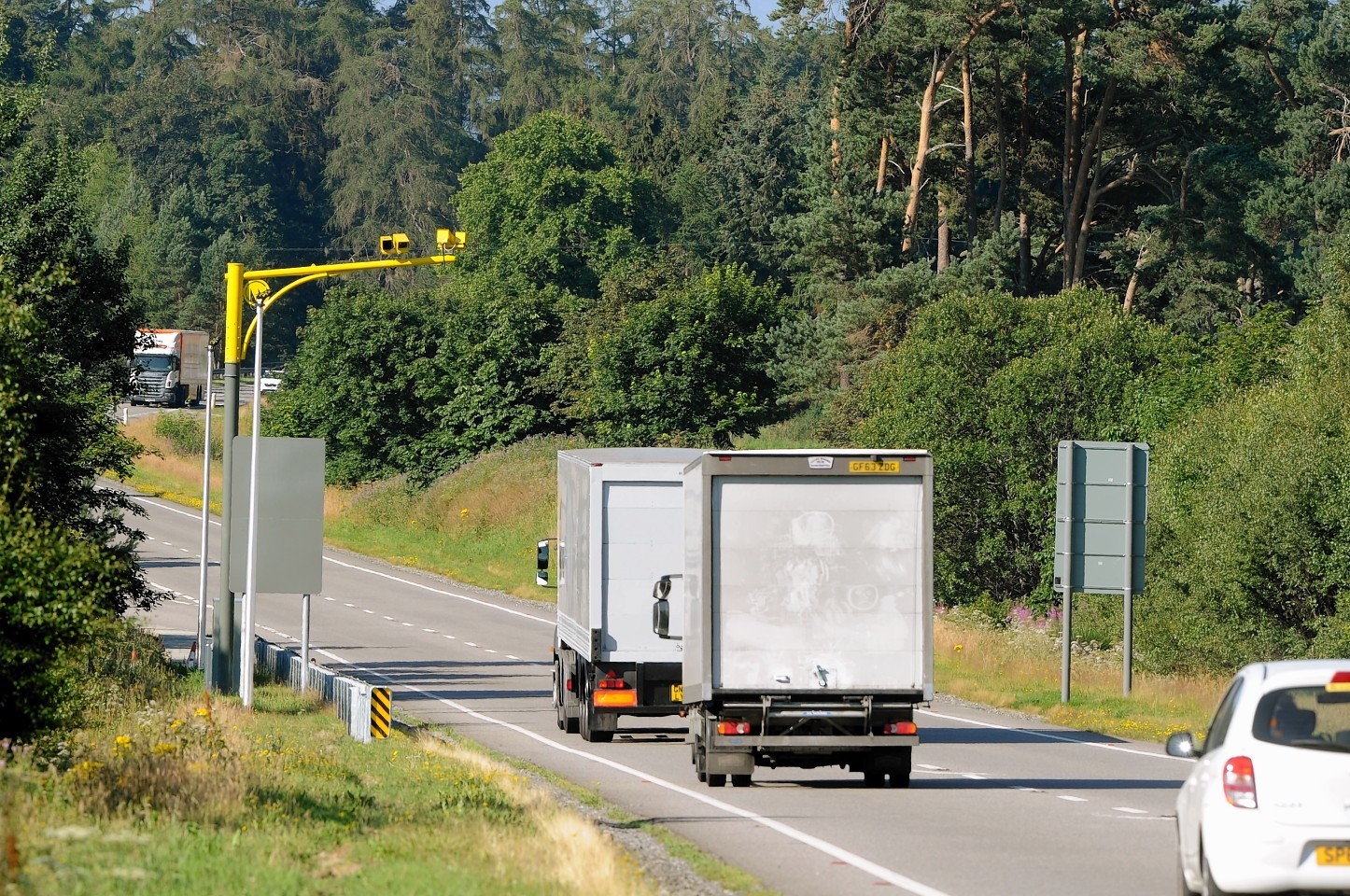The legislation to increase the maximum speed limit for HGVs on single carriageway sections of the A9 has been approved.
The new 50mph limit will come into force as the controversial average-speed cameras go live on Scotland’s most notorious road on Tuesday next week.
The trial scheme, which was approved by the Scottish Parliament earlier this year, aims to improve journey times and also driver behaviour, by reducing frustration, queue lengths and journey times for HGVs.
HGV drivers will now be allowed to drive at 50mph rather than 40mph during a three-year trial.
Transport Minister Keith Brown said: “We want to see reliable and competitive journey times for all road users, including the freight haulage industry. Simply raising the speed limits for HGVs could have a detrimental effect, but the use of average speed cameras as part of the pilot helps support the wider changes we are making to promote an overall improvement in driving conditions.
“The 50mph HGV pilot will bring operational benefits and help reduce frustration on Scotland’s longest road.”
Richard Burnett, chief executive of the Road Haulage Association, said: “The key issue here is one of improving journey time reliability for hauliers and other road users alike. Many A9 incidents, together with the resultant delays, are caused by no more than sheer motorist frustration when getting stuck behind a slow moving heavy goods vehicle.”
Highlands and Islands Labour MSP and road safety campaigner, David Stewart, said: “There is no doubt that speed is a contributory factor in road collisions on the A9, but other factors come into play and the police do not have a causation code for collisions caused by or related to frustration, so we have no way of checking how many of these collisions were actually caused by this emotion.
“I would say that in a fair number of cases, drivers start to get agitated when travelling at a slow speed for long periods and they then take a risk and undertake – an action that is dangerous.
“I will watch this pilot with interest, however, this pilot coincides with the average speed cameras activation day, so it may be more difficult to determine which is having the bigger impact.”
Mike Burns, of Foyers, who heads an anti-average speed camera group, said: “Whilst HGVs limit to 50mph will go a little way in improving safety on the A9, Keith Brown has scored yet another own goal by failing to implement the 50mph rise across the entire Scottish road network.
“The UK will now have a two tier speed limit system and Keith Brown has failed to justify why he needs to use 100 speed cameras to trial a limit on one stretch of road in Scotland when England and Wales, using the same evidence base, are implementing such a rise on a permanent basis to improve safety and economic performance with not one additional speed camera.
“It appears he is using the 50mph rise as a smoke screen to continue to justify his flawed camera scheme and has failed to bring his officials into line with the rest of the UK.”
